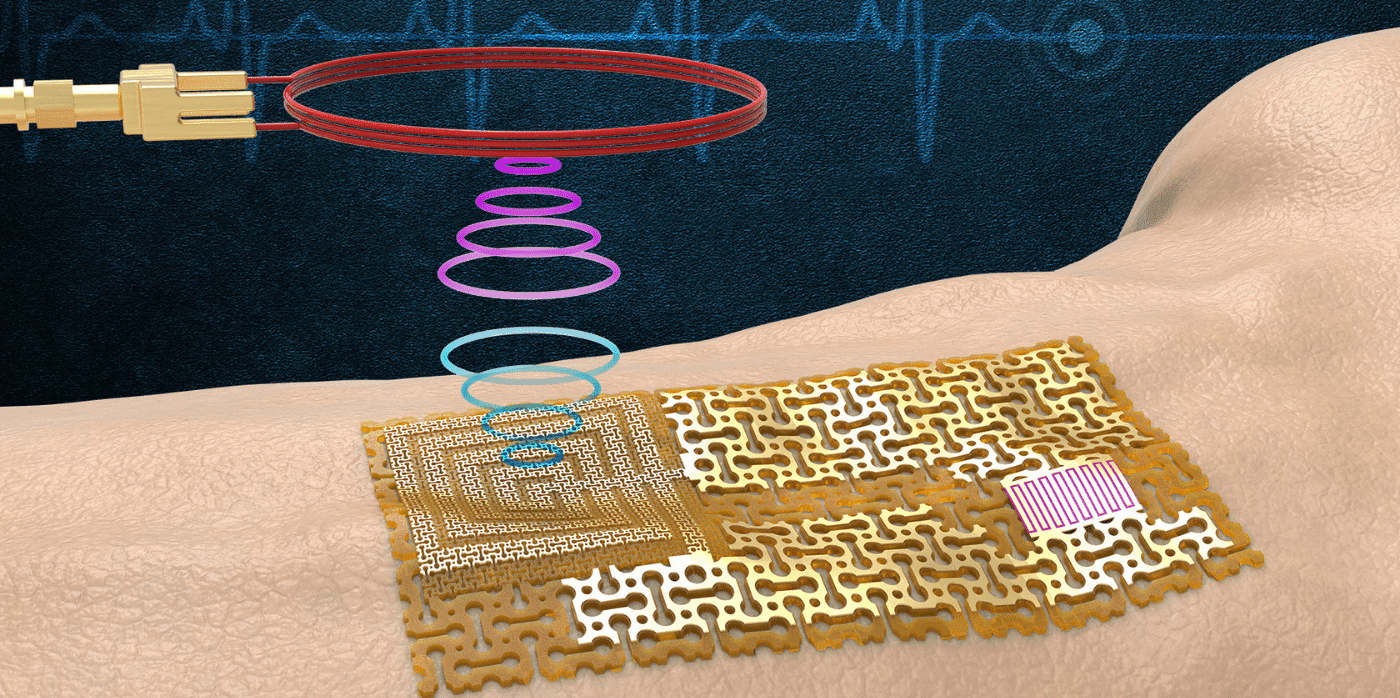Spotted: Most wearable health sensors today communicate via embedded Bluetooth chips. But these battery-powered chips are bulky meaning that they may not be suitable for the next generation of sensors. In response, a team of researchers at the Massachusetts Institute of Technology (MIT) is developing chip-free wireless sensors that are much smaller, more efficient, and self-powering.
At the heart of the team’s innovation is a phenomenon called piezoelectricity. When certain materials are subjected to mechanical stress, they accumulate an electrical charge. One such material is a semiconductor called gallium nitride, which the MIT researchers used to create an ultra-thin, flexible film. This film, in turn, forms the basis of an electronic skin (‘e-skin’) that is highly responsive to both electrical and mechanical stimuli. The piezoelectric properties of gallium nitride are ‘two-way’. This means that the material produces electricity in response to mechanical strain, while also vibrating in response to an electrical impulse. As a result gallium nitride is ideal for both sensing and wireless communication.
The research team’s e-skin works extremely well as a health sensor, sticking to human skin like sellotape. Because it is extremely sensitive, the e-skin can respond to a patient’s heartbeat and the presence of sweat. These stimuli cause it to vibrate, and these vibrations are sufficient to generate a small electrical current that can be read by a nearby wireless receiver.
“Chips require a lot of power, but our device could make a system very light without having any chips that are power-hungry,” explains Jeehwan Kim, an associate professor of mechanical engineering and of materials science and engineering. “You could put it on your body like a bandage, and paired with a wireless reader on your cellphone, you could wirelessly monitor your pulse, sweat, and other biological signals.”
The device is still under development, with the first successful outcomes recently published in the journal Science. Ultimately, the techniques used to create the sensor could pave the way for advances in everything from fitness tracking to medical diagnostics.
Springwise has spotted a number of innovations aiming to improve wireless healthcare, these include ultrasound stickers for mobile monitoring of internal organs, also developed at MIT, and a flexible battery created by researchers at the Korea Institute of Machinery and Materials (KIMM).
Written By: Katrina Lane
1st September 2022
Email: jeehwan@mit.edu
Website: jeehwanlab.mit.edu

